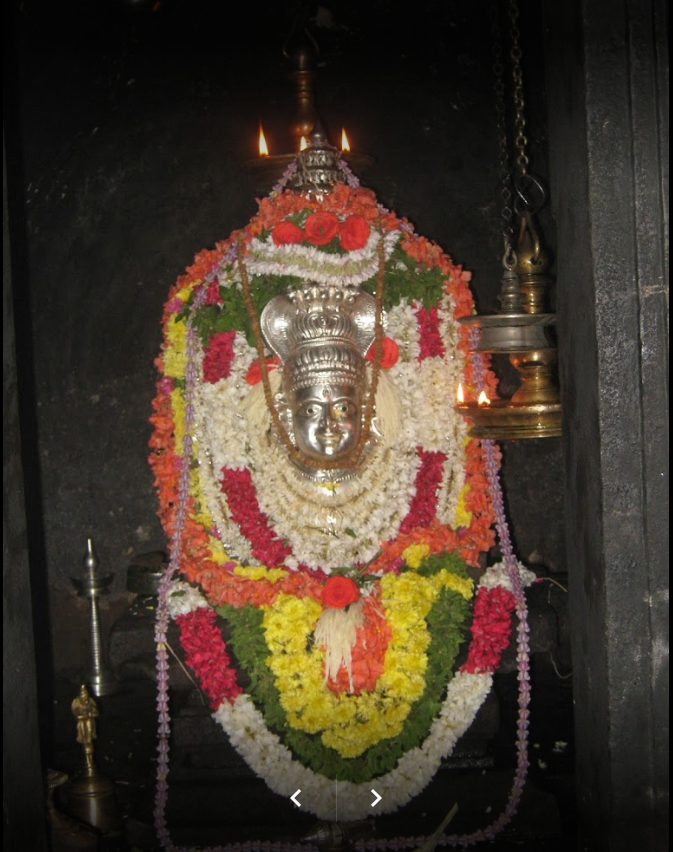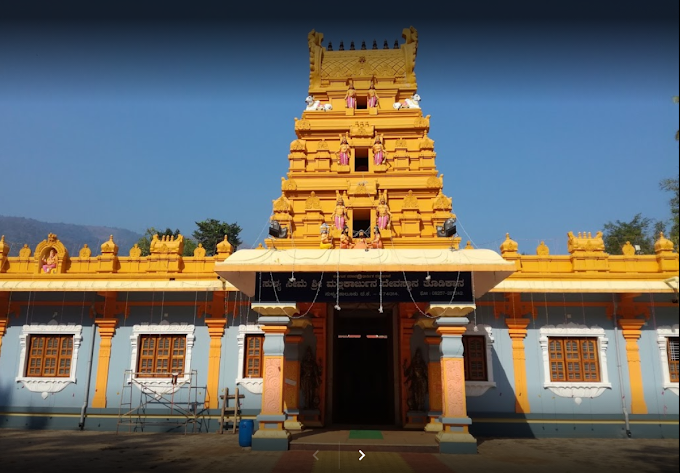About
Himvad Gopalaswamy Betta is covered with mist for most parts of the year and hence the first part of the name is Himvad meaning mist and the presence of the ascetic ancient temple on the top of the hill dedicated to Gopalaswamy or Lord Krishna forms the second part of the name and the third part is contributed by the fact that it is a hill or Betta.
The Temple of Shri Himavad Gopalaswamy was built seven centuries ago is one of the famous temple with picturesque views and in times it was called as South Govardhanagiri and Kamalachala. The temple is at a height of 4770 feet from Sea level. Himavad Gopalaswamy temple took shape in the 14th century and is dedicated to Lord Gopalaswamy or Krishna installed by the rishi “Agasthya”. The Temple was built in the year 1315 of Hoysala Era and the temple is facing North. This temple was built by the King Chola Ballala during AD 1315. Later the Wodeyars of Mysore who were ardent devotees of Lord Venugopala displayed keen interest in maintaining the hill temple.
Gundlupet has many ancient temples with great architecture built centuries ago, Himavad Gopalaswamy temple is built in the Dravidian style of architecture. The shrine stands as an epitome of architectural and artistic brilliance of craftsmen from the bygone era. The temple is dedicated to Gopalaswamy, which is one of the names of the Hindu God Krishna.
The gopuram of the temple is single-tiered and rests on the compound wall of the enclosure. A dhwajastambha (flag-pillar) and a bali-peetam (sacrificial altar) is present in the mukha mantapa (inner-porch). The parapet wall of the facade of the mukha mantapa contains the sculpture of dashavatara (the avatars of the Hindu God Vishnu) with the centre portion of the sculpture depicting Krishnavatara (the avatar of Vishnu in which he appeared as Krishna). There is a shikhara tower over the garbha griha (sanctum sanctorum).
The garbha griha contains an idol of Krishna holding a flute under a tree. The idol of Lord Krishna is 6 feet tall and The idol is sculpted to perfection and the posture is that of a dance with the left big toe resting on the right one. Simple yet grand the prabhavali / panel behind the idol has carvings of a tree, the Lords friends, his consorts Rukmini and Satyabhama, Cows and Cowherds, also features several other characters and icons from Krishna’s avatar. Cows and cowherds are featured towards the right side of the panel.
Another unique feature here is that throughout the year just above the door leading to the Sanctum Sanctorium cold-water drips constantly. The priest patiently narrates the legends associated with the place and sprinkles this water on the devotees. Visitors get ample opportunities to click some amazing pictures here because of the location of the temple. The surrounding hills and lush greenery along with the appealing architecture of the shrine make beautiful subjects for photography.
This site is noted for its scenic beauty and holds great religious significance. The plain tracts on the hills are covered with lush grass, and is home to elephants, deer and rabbit, while the slopes are covered with thick forests, home to tigers and leopards.
If you have ever dreamt of walking into the clouds or touching the cloud, then this is the place to realize your dreams and be literally on cloud 9! The branches of trees are covered with sphagnum moss and many species of Orchids endemic to Western Ghats are embedded in the moss-covered branches.
The forest of Himavad Gopalaswamy Hill is covered with rosewood, teakwood and other such valuable wood. Being a part of the Bandipur wildilife sanctuary, the hills are frequented by grazing wild elephants. The hills are also home to some rich bird life including peacocks, parrots, forest hens and pelicans. There is no doubt that anyone who visits this place will fall in love with it instantly.
The best part of this place is you will not find any crows, the legend says that once a crow had a dip in the near by pond and it turned into a swan and henceforth, no crows are to be seen here.
The place is also known for its picturesque views of the surrounding hills, valleys and visitors may also see the spectacular sunrise and sunset from the top.
Source : https://himavadgopalaswamy.org.in/
Himavad Gopalaswamy Hills – A Beautiful Hill Station with a Pilgrimage Place of Karnataka
Himavad Gopalaswamy Betta, (betta means Hill in english) is a Beautiful Hill Station with a Pilgrimage Place among the Hindus, located in the Chamarajanagar district of Karnataka State. The Hill is at a altitude of 1454 m from Sea Level and is extensively wooded. It is also the highest peak in the Bandipur National Park Zone. It lies in the core area of the Bandipur Tiger Reservedd National Park and is frequented by wild life including Tigers, Deers and elephants. Dense fog predominates and covers the hills round the year and thus gets the prefix Himavad(in the native language of Kannada) and the temple of Venugopalaswamy (Lord Krishna) gives the full name of Himavad Gopalaswamy Betta.
The hill is home to wild animals like Elephants, Gaur, Sloth Bear and the elusive Tiger. There are places uphill where you get a birds eye view of the forests below, so while driving up or down. The area is also frequented by herds of wild elephants. Some Times, the elephants are visible even to the naked eye. It is fascinating to see the Elephants from above move with their little ones slowly eating their way into the forests. We have also spotted Sambar, Gaur and an abandoned Tiger cave.
These hills are covered with grass and classified as shola forests. The forest is also a treasure trove of a variety of birds, animals and plant species. The sobriquet Himavad (fog / mist in Kannada) is because most of the year, there is a veil of mist covering the whole area, and winds blowing through the trees are like a song in praise of the lord. These regions were a favorite hunting ground for the Mysore Maharajahs and their British guests. The royals have built a guest house on top of the hills and there are some rare pictures of the Maharajahs and their guests with their prized hunt the tiger. Now, guest house remains locked.
A lake is situated near the temple and is popularly called Hamsatirtha. The swan acquires a mythical significance, symbolising knowledge, tranquillity and salvation. Legend says that sage Agastya, performed intense penance and as a result lord Vishnu blessed this place and promised to reside here. As this was a place of worship and penance, it used to be called as ‘Hamsatheertha’, which means the lake of swans in Sanskrit. There is another Myth associated with this place. There is no single crow found in the area. Believed that, if a crow dips into Hamsatheertha, it becomes swan and will fly away.

















